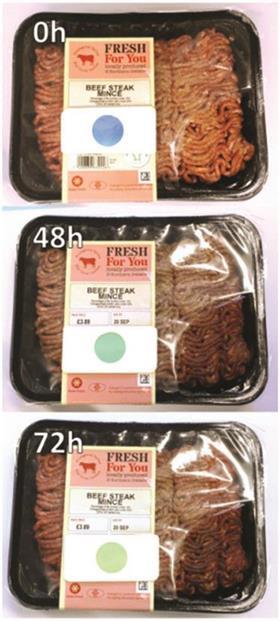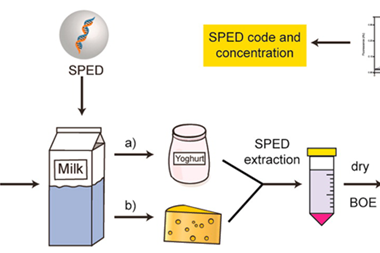Ammonia gas diffusion basis for inexpensive colour-changing food freshness label

Ever rummaged through the fridge and wondered, ’Is this meat still ok to eat?’ A cheap colour-changing label can now help answer this question.
Most commercial indicators that help customers evaluate their food’s freshness, such as MonitorMark and Timestrip, are expensive to manufacture or must to be stored at very low temperatures in order to prevent them from going off before being placed on the food. A new indicator developed by Andrew Mills and his team at Queen’s University Belfast, UK, overcomes these problems as it is made from very cheap materials, can be stored at room temperature, and activated when and where it’s needed.
The label changes colour from blue to yellow, depending on the surrounding temperature – as soon as the label is yellow, you know not to consume the food. Mill’s team made the label from two films stuck together – one produces ammonium gas by decomposition of ammonium bicarbonate, the other is a colour-changing ammonia indicator. When the top, ammonia-producing layer is removed, the indicator’s colour change will begin above a specific temperature as the ammonia diffuses out of the indicator film. But don’t worry, the amount of ammonia excreted is 1000 times smaller than the daily exposure limit. The technology behind this label has never been used before for food freshness indicators.
The researchers have found that if they alter the amount of the materials included in the original recipe, the time it takes to change from blue to yellow can be made slower or faster, meaning the label can be adapted to foods with varying shelf life.
References
This article is free to access until 25 January 2017
A Mills et al, Chem. Commun., 2016, 52, 13987 (DOI: 10.1039/C6CC07906G)











No comments yet